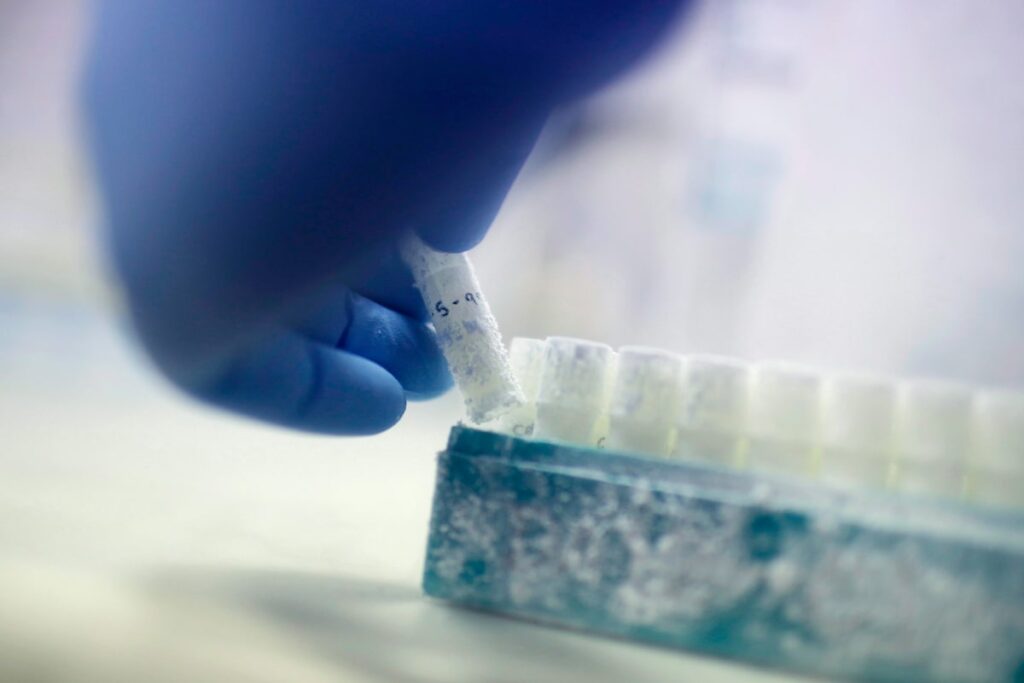Vanessa Gruben is Director of the Center for Health Law, Policy and Ethics and Associate Professor in the Faculty of Law at the University of Ottawa. Alana Cattapan is an Assistant Professor of Political Science and Canada Research Chair in Reproductive Politics at the University of Waterloo.
A recent documentary revealed that three sperm donors from the same Quebec family are the biological ancestors of hundreds of children. They posted ads on Facebook and traveled around the state donating sperm to people who wanted children.
There is reason to be concerned about such prodigious reproduction. Two of the donors have genetic disorders that affect the liver and could be passed on to their genetic children. And given the concentration of a significant number of genetic half-siblings and potential half-cousins within a relatively small geographic area, this situation raises concerns about consanguinity (descendance from the same ancestor). is causing.
Quebec's public health director said he was “shocked” by the documentary and said no one in Canada “anticipated something like this.” But many did. Policy makers, academics and people conceived by donors have been sounding the alarm for decades, calling for a registry to track sperm donors and their offspring and limit the number of births per donor.
It has a long history, but as early as 1993 the Royal Commission on New Reproductive Technology required a limit of no more than 10 births per sperm donor and a national register. The Federal Assisted Human Reproduction Act of 2004 requires a donor registry to inform donor-conceived persons of potential health and safety risks and a mechanism for donors to identify genetically related siblings. The need for this was also foreseen.
However, the portion of the law that allowed the federal government to establish a registry was overturned in 2010. The Supreme Court ruled that the registry was outside the authority of the federal government and was up to the actions of each state. However, states did not intervene and continue to ignore the need for donor registration to this day.
Concerns about excessive sperm donation by these three men prompted the Quebec government to take action. The state is currently considering ways to limit the number of children born from sperm donation. That's a good first step. But this effort doesn't just apply to Quebec.
It said all state governments would need to work together to build a national donor registry, and state and territory health departments would be convened to spearhead efforts to reduce the risks faced by people who become pregnant with donors. The federal government has an important role to play.
Canada will cooperate in these efforts. Many other countries have long-established registries that allow governments and institutions to track sperm and egg donations and set limits on the number of times a donor's sperm (or eggs) can be used. Masu. For example, in the UK, the Human Fertilization and Embryology Authority (HFEA) has a database containing information on all donors and donor-conceived children since 1991. Additionally, the HFEA limits the number of families that can be created using human gametes to her 10 families. There is one donor.
Similar regulatory frameworks exist in Australia, Belgium, Denmark, France, the Netherlands, Norway, etc. Experts are also calling for international restrictions, recognizing that sperm and sperm donors often travel across borders.
Regulations are not foolproof. Scandals can occur even when registrations and restrictions exist. Last year, news outlets reported that a Dutch man had given birth to more than 500 genetic donors, despite registration and donor restrictions, after giving false information to parents and fertility clinics about the number of donations he had made. It is reported that he left behind descendants.
Some cases are difficult to track, especially when donations are made outside of fertility clinics and donors and recipients met on social media, as happened in Quebec. It is unclear whether the registration system or donor restrictions will deter those who try to defy the system.
Still, donor registration and donor restrictions are important tools to demonstrate that Canada takes the interests of donor-conceived people and their families seriously.
An effective donor registry maintains information on both the donor and the donor-conceived person, allows for tracking of multiple donations, and allows donor-conceived persons and their families to share information. Having an ombudsman to deal with complaints and concerns about potential issues can also go a long way.
The fact that three Quebec men have hundreds of genetically related children should come as no surprise to those who follow fertility governance in Canada and other countries. . However, we hope this will inspire Quebec and the rest of Canada to develop a coordinated and comprehensive approach to protect the interests of Canadian donors.



